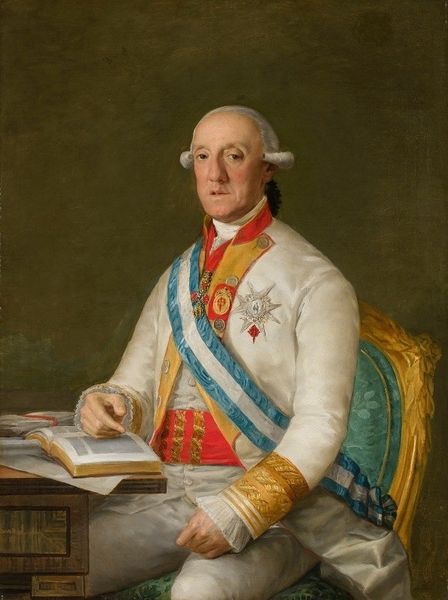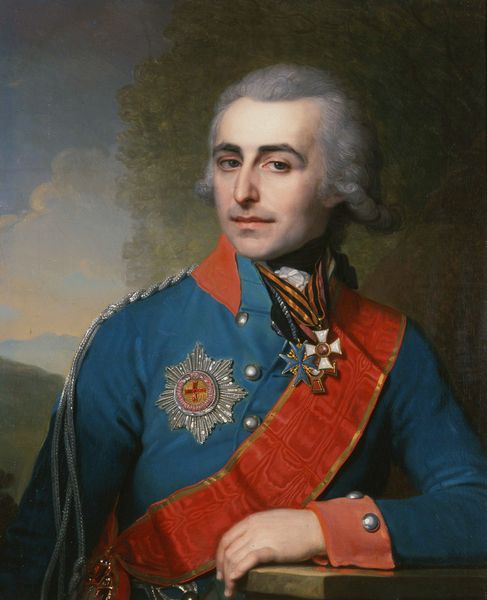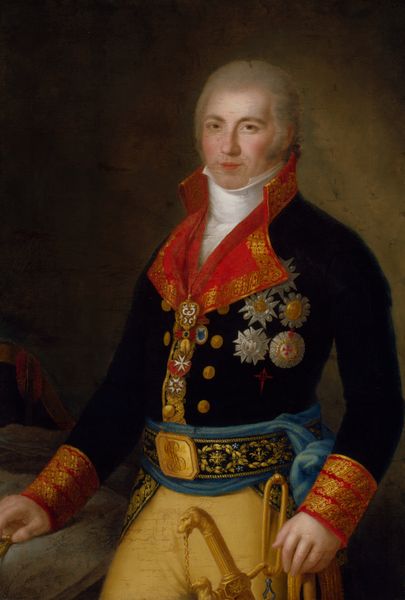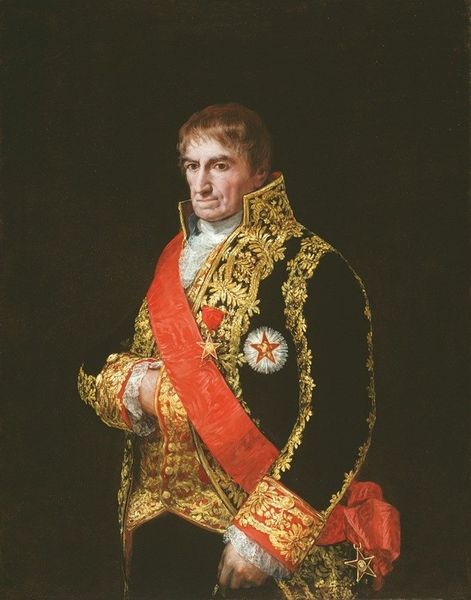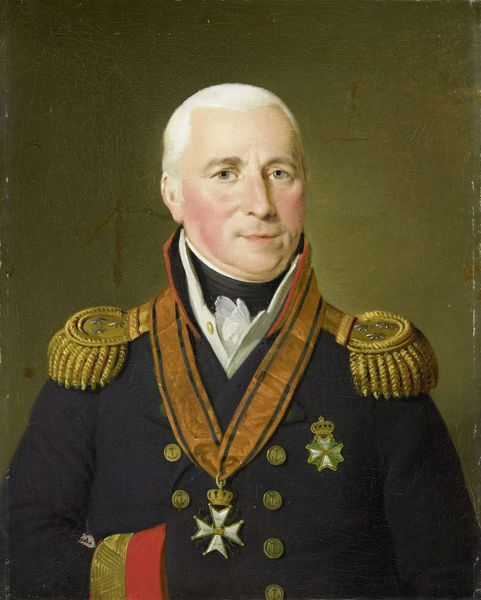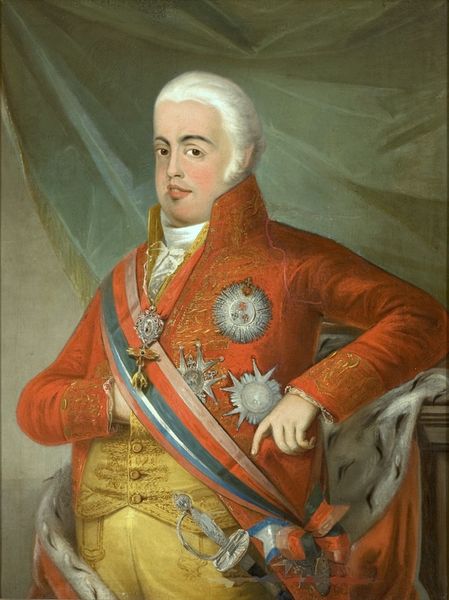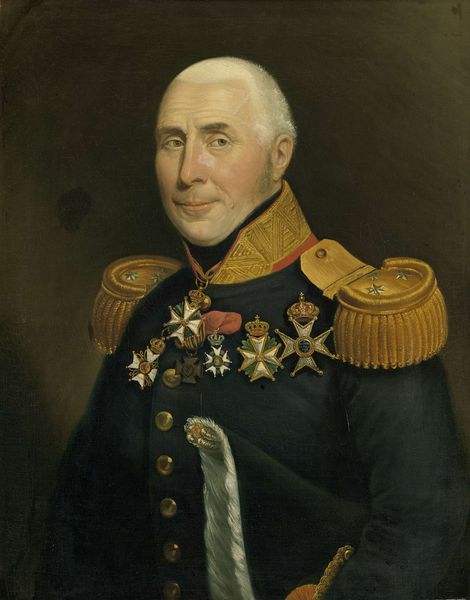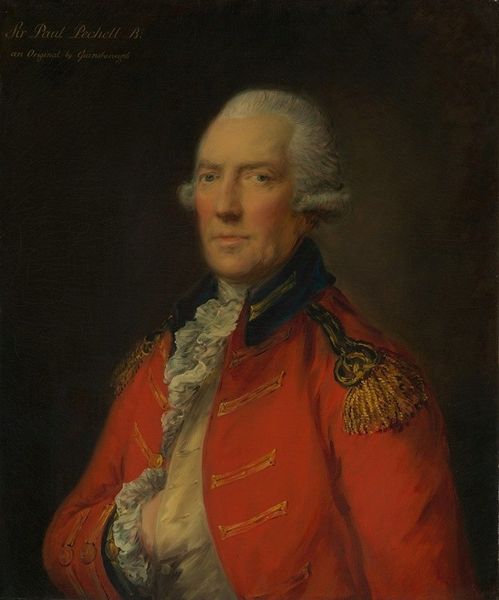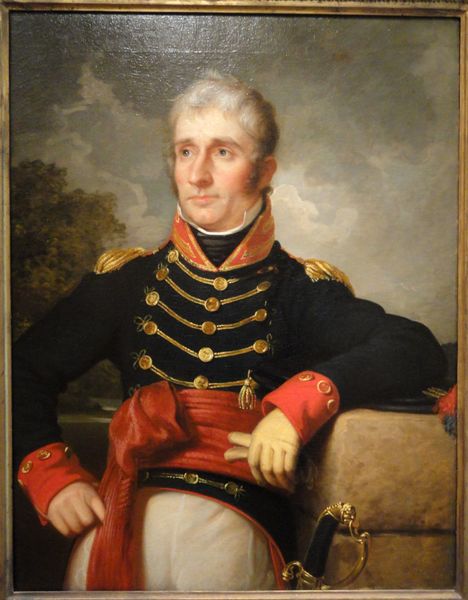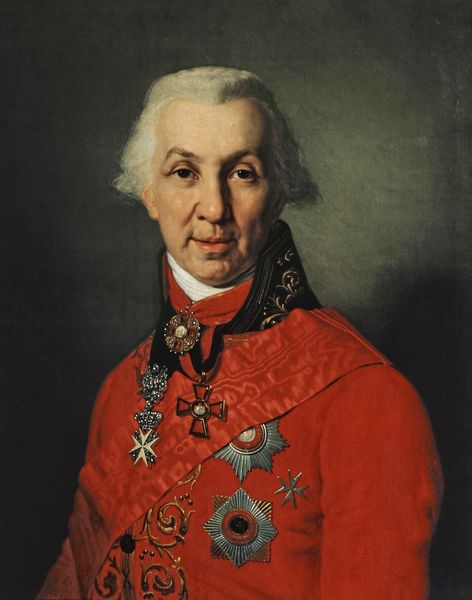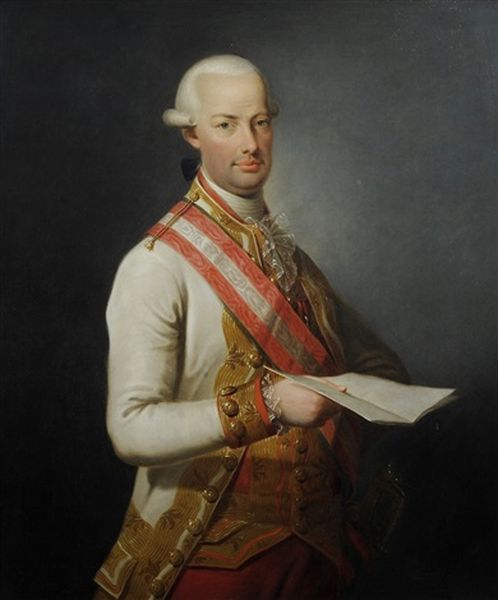
Dimensions: 127 x 94 cm
Copyright: Public domain
Curator: Let's turn our attention to Goya's "Portrait of Charles IV of Spain," created in 1789, now hanging in the Museo Lázaro Galdiano. Editor: My initial reaction is one of…stiffness. He's so adorned, so regal, yet there's a certain unease radiating from the canvas. A performative grandeur perhaps? Curator: Absolutely. Understanding the historical context is crucial here. Charles IV’s reign was marked by political turmoil, overshadowed by the French Revolution. Goya's position as court painter was incredibly complex. The portrait attempts to convey stability and authority, but history remembers the opposite. It's essential to interpret royal portraiture as tools for legitimizing power, particularly in a time of massive upheaval. Editor: Visually, it's interesting how the artist plays with the symbols of monarchy: the elaborate ornamentation, the royal sash. Those aren't just pretty details; they’re concentrated visual statements about lineage, divine right, the supposed strength of the Spanish crown. What do you make of his slightly vacant expression? Curator: That's what is striking here. There is an undeniable tension between Goya’s keen observational skills – we see him rendering Charles’ face quite realistically – and the imperative to idealize a king. It almost suggests a critique, even subversion, of the monarchy from within, which is not so rare for Goya. This portrait can be read as a cautionary tale of leadership teetering on the edge of oblivion. It speaks volumes about a decaying aristocracy and the inevitability of social change. Editor: So much information embedded in visual symbols! The muted colors amplify the somber mood too. After reflecting on it for a moment, the painting starts telling quite a tale, doesn't it? Curator: It really does, it invites questions about the performance of power and Goya's critical perspective, even within the confines of the royal court.
Comments
No comments
Be the first to comment and join the conversation on the ultimate creative platform.

